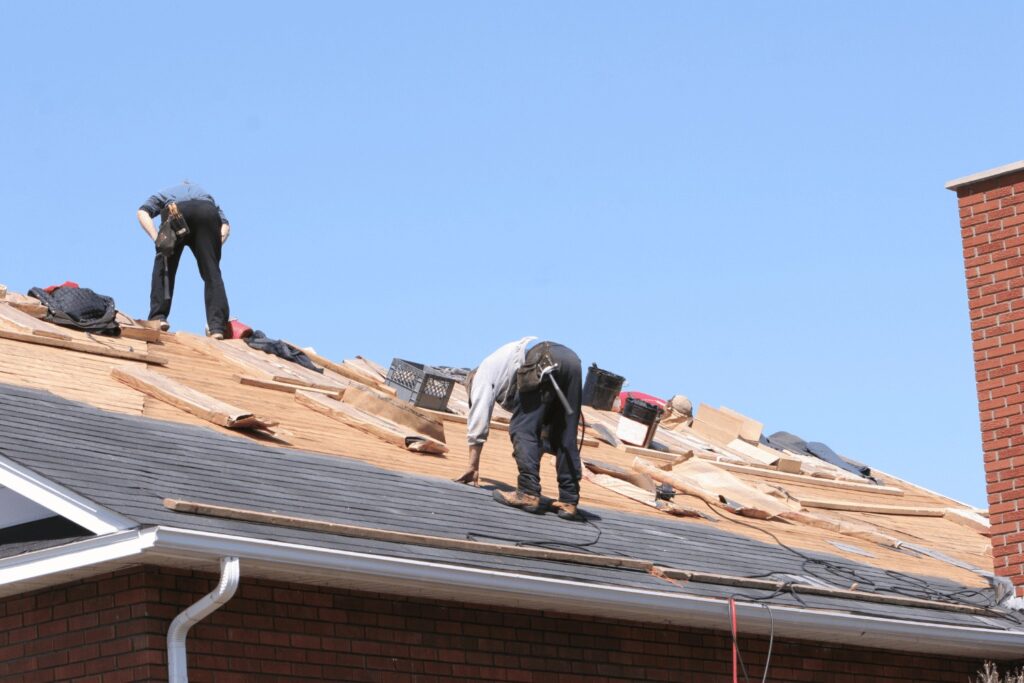Choosing the Right Materials for Your Reroof Project
When planning a reroofing project, one of the most important decisions you’ll make is choosing the right roofing material. The type of material you select will not only determine how your roof looks but also how it performs over time. Factors such as climate, budget, and aesthetic preferences all play a role in this decision. Taking the time to understand the different roofing materials available can help ensure that your investment enhances your home’s protection, energy efficiency, and overall value.
Understanding Your Needs and Environment

Before settling on a material for your reroof project, it’s essential to assess your specific needs. The climate in your area plays a significant role in determining the best roofing material. For example, homes in regions that experience heavy snowfall will benefit from materials that can bear weight and shed snow easily. In contrast, areas prone to high heat or intense sunlight might require materials with high heat resistance and reflective qualities.
Your home’s architectural style is another key factor to consider when planning to reroof. Some materials suit certain styles better than others. For instance, clay tiles are often chosen for Mediterranean-style homes, while asphalt shingles may complement a range of traditional designs. Furthermore, local building codes or homeowners’ association rules may limit your options, so it’s important to verify any restrictions in advance before you reroof.
Exploring Common Roofing Materials
Several roofing materials are commonly used in reroofing projects, each with its own set of advantages and considerations. Asphalt shingles remain one of the most popular choices due to their affordability, ease of installation, and wide variety of colors and styles. They generally offer decent durability and are suitable for many climates, though they may not last as long as some premium alternatives.
Metal roofing has gained popularity in recent years thanks to its durability, energy efficiency, and low maintenance requirements. It performs well in both hot and cold climates and can last significantly longer than asphalt. Metal roofs can also mimic the appearance of other materials, such as slate or wood shakes, while providing superior fire and wind resistance.
Clay and concrete tiles are known for their distinctive appearance and long lifespan. These materials are incredibly durable and perform well in hot, dry climates. However, they can be heavy and may require additional structural support to be installed properly. Slate is another high-end option that offers timeless beauty and exceptional longevity, though its weight and cost often make it a less common choice.
Wood shingles and shakes provide a natural and rustic aesthetic. While visually appealing, they may require more maintenance and are susceptible to fire unless treated. Their performance also depends heavily on the climate, as areas with high humidity can cause wood to warp or decay.
Synthetic roofing materials, such as rubber, plastic, or polymer blends, have emerged as versatile and cost-effective alternatives. These products can replicate the appearance of more expensive materials while offering better resistance to weather and wear. They also tend to be lighter in weight and easier to install.
Balancing Cost and Longevity
Budget is a major factor when selecting a roofing material. While asphalt shingles are generally the most cost-effective upfront, they typically last between 15 to 30 years. On the other hand, metal, slate, and tile roofs might require a higher initial investment but can last anywhere from 40 to over 100 years with proper maintenance.
It’s important to consider not just the cost of materials, but also the expenses related to labor, underlayment, disposal of old roofing, and any necessary structural upgrades. A higher-priced roof might actually be more economical in the long run if it reduces the need for repairs or replacement.

Considering Energy Efficiency and Environmental Impact
The right roofing material can also improve your home’s energy efficiency. Light-colored or reflective materials can reduce heat absorption and lower cooling costs during warmer months. Some metal and tile roofs offer special coatings that enhance their ability to reflect solar heat.
Sustainability is another aspect worth considering. Some materials are more environmentally friendly than others, either due to their composition, recyclability, or the energy required to produce them. Metal roofing, for instance, is often made from recycled content and can be recycled again at the end of its life. Similarly, synthetic materials may be engineered for eco-friendliness without sacrificing performance.
Getting Professional Guidance
While it’s important to research your options thoroughly, consulting with a qualified roofing contractor can provide additional clarity. Professionals can assess your home’s structural integrity, offer insight into the most suitable materials for your climate and budget, and help ensure that installation is done correctly. Their experience can also be invaluable in avoiding costly mistakes and achieving long-term satisfaction with your reroofing project.
Leave a Reply